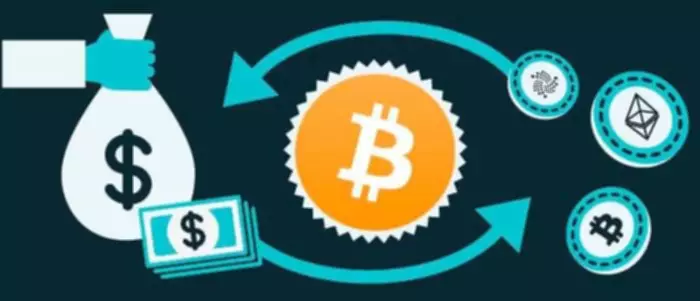If a pair of checkpoints attracts votes representing at least two-thirds of the total staked ETH, the checkpoints are upgraded. The earlier of the two is already justified as a end result of it was the “target” in the earlier epoch. The committee has a time-frame in which to propose and validate a shard block. After every epoch, the committee is disbanded and reformed with totally different, random participants. Proof-of-stake is more advanced than proof-of-work, which suggests there are more potential assault vectors to deal with. Instead of 1 peer-to-peer network connecting clients, there are two, every implementing a separate protocol.
Long touted as a risk to cryptocurrency fans, the 51% assault is a priority when PoS is used, however there could be doubt it will occur. Under PoW, a 51% assault is when an entity controls more than 50% of the miners in a community and uses that majority to alter the blockchain. In PoS, a group or individual must own 51% of the staked cryptocurrency. Proof-of-stake reduces the quantity of computational work needed to verify blocks and transactions.
In proof-of-work, the ability to reverse a block will get exponentially more difficult with every passing block mined on high of a transaction, nevertheless it by no means fairly reaches zero. Under proof-of-stake, blocks are bundled into epochs (6.four minute spans of time containing 32 chances for blocks) which validators vote on. When an epoch ends, validators vote on whether to contemplate the epoch ‘justified’. If validators comply with justify the epoch, it gets finalized within the subsequent epoch. Undoing finalized transactions is economically inviable as it would require acquiring and burning over one-third of the total staked ETH.
The ‘weight’ of amassed attestations is what consensus purchasers use to determine the proper chain, so this attacker would have the power to make their fork the canonical one. However, a power of proof-of-stake over proof-of-work is that the community has flexibility in mounting a counter-attack. For example, the trustworthy validators may decide to maintain constructing on the minority chain and ignore the attacker’s fork whereas encouraging apps, exchanges, and swimming pools to do the same.
Ethereum Switches To Proof-of-stake Consensus After Completing The Merge
Historically, on proof-of-work, the target was to have a new block every ~13.3 seconds. Under proof-of-stake, slots occur exactly every 12 seconds, each of which is an opportunity for a validator to publish a block. Most slots have blocks, but not necessarily all (i.e. a validator is offline).
For PoW, miners should invest in processing equipment and incur hefty vitality costs to power the machines making an attempt to solve the computations. To become a validator, a coin owner should “stake” a certain amount of cash. For occasion, Ethereum requires 32 ETH to be staked before a person can operate a node. Blocks are validated by multiple validators, and when a specific ethereum switch to proof of stake number of validators verify that the block is accurate, it’s finalized and closed. The Merge refers back to the switchover of Ethereum from proof-of-work to proof-of-stake — two totally different methods of validating transactions on the blockchain. If you’re not particularly excited about world of crypto, then the technical differences between the two approaches are somewhat arcane (The Guardian has a good explainer here).

This is problematic and needs to be corrected as soon as possible, however it’s also extra nuanced than it appears. To safely develop and check the proof-of-stake consensus logic, the Beacon Chain was launched two years before proof-of-stake was applied on Ethereum Mainnet. Once this had been stable and bug-free for a enough time, the Beacon Chain was “merged” with Ethereum Mainnet. This all contributed to taming the complexity of proof-of-stake to the purpose that the danger of unintended consequences or consumer bugs was very low. This wouldn’t be possible without first transitioning to proof-of-stake. Since the Shanghai/Capella network improve, stakers can now designate a withdrawal address to start out receiving automated payouts of any extra staking steadiness (ETH over 32 from protocol rewards).
Proof Of Stake: Security Via Staked Cash
The proof-of-stake mechanism radically changes how the Ethereum blockchain works. It eliminates the need for mining new blocks because the community is now secured utilizing staked ETH and validators. Popular cryptocurrency blockchain Ethereum has accomplished its long-awaited switch to proof-of-stake. That upgrade process, higher known as “The Merge”, has been years in the making.

It guarantees that knowledge can’t be altered, canceled or lost as soon as included in the canonical chain. The time to succeed in a state of finality is decided by the blockchain’s latency stage. The APR can also be deliberately dynamic, allowing a market of stakers to balance how much they’re prepared to be paid to assist safe the network. If the speed is too low, then validators will exit at a rate restricted by the protocol.
Can I Take Part In Staking Without Setting Up Hardware?
Finality with PoS Ethereum is organized through a deterministic methodology and what’s often known as “checkpoint” blocks. Participants then vote on pairs of checkpoints that are thought-about legitimate. There are more than 400,000 validators on the Beacon Chain, the muse of Ethereum’s future proof-of-stake community. Slots for model spanking new validators happen every 12 seconds to create a new block and ship it out to other nodes (participants) on the network. The Merge represents the formal adoption of the Beacon Chain as the brand new consensus layer to the unique Mainnet execution layer. Since The Merge, validators are assigned to safe Ethereum Mainnet, and mining on proof-of-work is now not a valid technique of block manufacturing.

Users won’t need to do something with their funds or digital wallets as part of the upgrade, they say. High costs and sluggish transaction occasions are presently two of the main issues users have with the Ethereum community. To higher understand this web page, we advocate you first learn up on consensus mechanisms.
The time period “downtime” refers to the time frame throughout which a validator is offline and unable to produce new blocks. This could be because of network delays, software issues, or hardware issues. Even after a transaction is confirmed as part of the newest block, it doesn’t imply it can’t be modified or undone. For a short interval that follows, a transaction may be vulnerable to assaults from dangerous actors who attempt to exploit weak points in the blockchain. The validator choice in Ethereum’s Proof of Stake (PoS) system is based on a validator’s stake in the community. To clarify, the larger the stake, the more doubtless that node shall be chosen to add the model new block to the chain.
Ethereum’s Long-awaited Proof-of-stake Transition Set To Begin On September Sixth
Proof of stake, first proposed on an internet discussion board called BitcoinTalk on July 11, 2011, has been one of many more in style options. In fact, it was imagined to be the mechanism securing Ethereum from the start, in accordance with the white paper that initially described the new blockchain in 2013. The winner appends the subsequent block to the chain and claims new bitcoins in the form of the block reward.

Understanding Ethereum’s Proof of Stake consensus mechanism will assist you to make informed selections about interacting with the blockchain. Knowledge is energy, and Ledger Academy is right here to act as your guide. Unraveling the complicated but highly effective consensus mechanism securing the behemoth blockchain that is Ethereum. Ethereum wants to move to proof of stake so it doesn’t further exacerbate the environmental horrors of Bitcoin.
This incentivizes validators to act in good faith to benefit the cryptocurrency and the network. The PoS mechanism seeks to solve these problems by effectively substituting staking for computational power, whereby the community randomizes an individual’s mining capability. This means there must be a drastic discount in energy consumption since miners can now not depend on huge farms of single-purpose hardware to gain a bonus. For example, Ethereum’s transition from PoW to PoS reduced the blockchain’s power consumption by 99.84%. Both consensus mechanisms assist blockchains synchronize information, validate information, and process transactions. Each methodology has confirmed profitable at sustaining a blockchain, although each has professionals and cons.
‘It’s happening’ — 5 Ethereum ETF bidders amend SEC filings – Cointelegraph
‘It’s happening’ — 5 Ethereum ETF bidders amend SEC filings.
Posted: Wed, 22 May 2024 01:29:26 GMT [source]
According to the Ethereum Foundation, today’s transition reduces Ethereum’s energy consumption by 99.95%. A proof-of-stake community like Ethereum secures itself via staked cryptocurrency. Instead of expending computing energy to solve a puzzle, the nodes validating new transactions stake their very own value as collateral. These nodes then run effectively https://www.xcritical.com/ and truthfully to avoid shedding that collateral. Proof of stake, however, requires “validators” to place up a stake—a cache of ether tokens in this case—for a chance to be chosen to approve transactions and earn a small reward.
Ethereum Staking: What Does It Mean For Business?
Since then, he has assisted over 100 firms in a selection of domains, together with e-commerce, blockchain, cybersecurity, online marketing, and much more. In his free time, he likes enjoying video games on his Xbox and scrolling by way of Quora. If an attacker wants to revert a finalized block, they would therefore should be keen to lose at least one-third of all of the ETH that’s been staked. Through the Ledger Live app, you can simply and securely stake Ethereum coins to a validator and start earning ETH rewards, passively.
